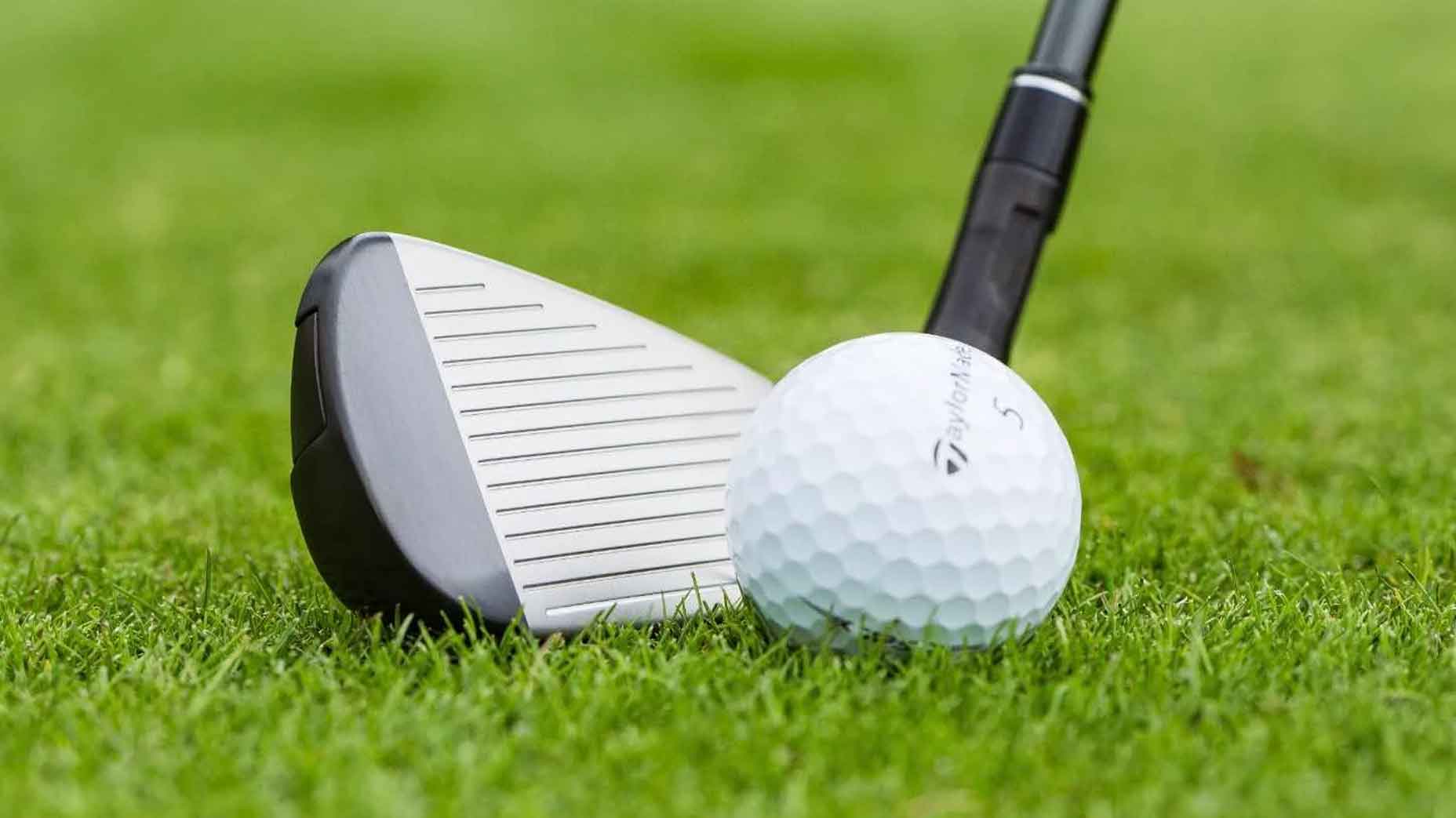Fix your irons with 3 important gear adjustments | Fully Equipped

Irons giving you fits? Consider these three gear tweaks before moving on.
GOLF
When things aren’t going right on the course, it’s easy to place the blame squarely on the tools instead of the user. No one wants to be told they need a swing overhaul. Let’s sentence the clubs to a lifetime spent in the “timeout closet.”
But what if it really is the clubs? In other words, maybe you’re only a few gear tweaks away from getting that pesky 7-iron — yes, it’s a thing — back on track.
On the latest episode of GOLF’s Fully Equipped podcast, co-hosts Kris McCormack and Gene Parente offered tips to revitalize your clubs before cutting bait. In this particular instance, they placed the focus on the irons.
Suppose you’re unfamiliar with the design behind your current set of irons. In that case, it’s best to get a certified club fitter involved so they can analyze several metrics to determine how close or far off you are from a well-fit set of irons. Two metrics that deserve a closer look are carry distance and descent angle. The latter can ultimately determine if your ball has the necessary stopping power to land on the green and come to rest at your expected distance.
“You really need to know where you sit on the matrix from a clubhead speed and attack angle standpoint before you can even start to guess or get direction as to where you want to go from a launch and spin standpoint,” said Golf Laboratories founder Gene Parente. “Ultimately, it comes down to two factors. One is the distance you’re looking for, and the second is your descent angle. Descent is the apex coming down to the green. You want an angle around 45 to 50. That allows the ball to stop and hold. If you’re at 60 mph clubhead speed, you might want to be closer to 0 or -2 [attack angle] and have as much loft as possible to get that descent angle. If you’re at 100 mph, you need to be around -4 to -6. Descent angle and carry are critical.”
Assuming you’re somewhere close to the ideal descent angle but something still feels off, McCormack, True Spec Golf’s VP of Tour and Education, said you can focus on three areas for additional tweaks: loft, golf ball and shaft.
Loft
If you notice the carry distance gap between two irons is dangerously close or miles apart, bending the head strong or weak can get launch, spin and carry in a proper window. The bending process isn’t labor intensive or expensive — provided you know what you’re doing or have a club-fitter who can do the work. That’s the good news.
As McCormack noted, the bad news is you can ruin a club if you bend it too far. In some cases, that could mean snapping the neck of a good club or bending to the point that it negatively affects turf interaction and bounce.
“I don’t like to manipulate loft more than [one] degree, one way or the other, personally,” McCormack said. “For some of the irons you can go as much as two [degrees] before it starts to move around and hurt turf interaction and bounce characteristics.”
If you have to bend an iron more than two degrees to get it in your preferred window, then it’s time to seek out alternative gear tweaks.
Golf ball
The golf ball can help scrub spin or tack it back on, depending on the model and what you’re trying to accomplish. Similar to altering the loft, a combination of bending the head and changing ball models can make positive improvements. Just don’t assume there’s a magic ball on the market that’ll solve all your problems by itself.
TaylorMade TP5x Stripe Ball
$57.99
The fastest 5-layer Tour ball is now ½-club longer*. The Speed Wrapped Core delivers low spin with the driver while maintaining exceptional greenside control. Now with 360° ClearPath Alignment, lining up at the target on the green and off the tee has never been easier.
View Product
As I mentioned in a recent story on ball testing, robotic testing of 40 models with Golf Laboratories’ swing robot revealed the spin rate delta from the highest to lowest was a mere 600 RPMs with a driver. Of those models tested, more than half had a spin rate between 2,500 and 2,800 RPMs. Launch also changed less than 1 degree across all balls.
Again, it’s all about incremental improvements when you add in the right ball. Those improvements could be a total game-changer for many golfers, but if you need to change launch and spin measurably, it’s very likely going to come from using the correct head and shaft.
Shaft
Of the three we’ve covered, the shaft has the potential to impact launch and spin the most — if you’re using an off-the-rack set. Linking up with a knowledgeable fitter could reveal the stock offering in your current set is designed to induce a higher launch when you’re already a high-spin, high-launch player. Or maybe you struggle to get the ball in the air and don’t realize the shaft in your irons is a tip-stiff offering.
There isn’t a universal flex and bend profile for every shaft in the marketplace, and it’s silly to assume golfers have the knowledge base to understand if a stock stiff-flex shaft is suited for their game. Depending on how far off you are at the moment, it’s very possible the correct shaft could change your game in a meaningful way.
Incremental improvements can be made with a different shaft as well if you’re looking to tighten up dispersion and shed a little bit of spin. Again, this is where a reliable fitter and access to a launch monitor can make a world of difference.
Want to overhaul your bag for 2024? Find a fitting location near you at True Spec Golf.
Related
5 Things I Never Play Golf Without: David Dusek
Our 11-handicap equipment writer always brings his favorite divot repair tool, a portable speaker and some high-tech gear to the course.As long as the weather i
Donald Trump’s golf course wrecked by pro-Palestine protesters
Pro-Palestinian protesters have vandalized parts of U.S. President Donald Trump's golf course in Scotland in response to his proposal for the reconstruction of
Man holding Palestinian flag scales London’s Big Ben hours after…
CNN — Emergency services were called to London’s Palace of Westminster on Saturday a
EPD: Drunk driver parked car on golf course
EVANSVILLE, Ind. (WFIE) - Evansville police say they arrested a man after finding him drunk in his car that was parked on a golf course.Officers say they were c















